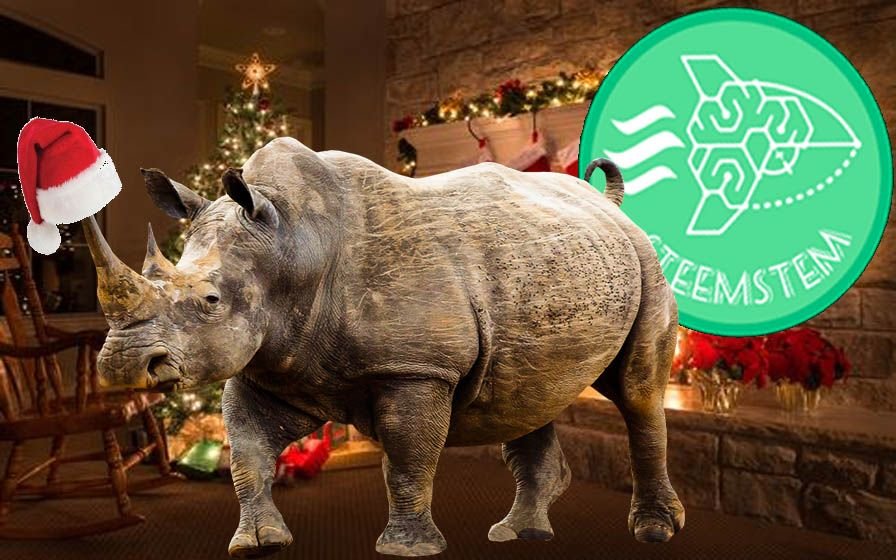Sorry @tarazkp, I lied. This isn't a fun post at all!

There's a widely-held belief in the West that Chinese people love using rhinoceros horns in the mythical belief that it boosts their libido, working as a wonderful aphrodisiac. This is simply not true.
... They actually use rhino horn for a whole range of medicinal purposes. But is it their fault?
History
Rhino horn has been used for a long, long time in TCM (Traditional Chinese Medicine) to treat anything from fever and infection to arthritis, gout and even cancer. Not impressed? It also supposedly heals vomiting, rheumatism, snake bites, typhoid and possession of the devil himself. Anything you want, really.
It took me some time to come across anything at all regarding the history of this omni-cure from the Gods, but I managed to go back several centuries.
According to Li Shizhen (李时珍) in his Pen Ts’ ao Kang Mu back in 1597 (Consider here that bacteria wasn't even known about until Antony Leeuwenhoek in the 1670's), the above treatments we use today were just a spattering of what it once was used for. Frankly, the following passage is a fascinatingly imaginative read:
...to cure devil possession and keep away all evil spirits and miasmas. For gelsemium poisoning. To remove hallucinations and bewitching nightmares. Continuous administration lightens the body and makes one very robust. For typhoid, headache and feverish colds. For carbuncles and boils full of pus. For intermittent fevers with delirium. To expel fear and anxiety, to calm the liver and clear the vision. It is a sedative to the viscera, a tonic, antipyretic. It dissolves phlegm. It is an antidote to the evil miasma of hill streams. For infantile convulsions and dysentery. Ashed and taken with water to treat violent vomiting, food poisoning, and overdosage of poisonous drugs. For arthritis, melancholia, loss of the voice.
You might notice that among all those bizarre ideas, an alternative to Viagra isn't one of them. And indeed, it has rarely been found used as an aphrodisiac at all. Many elderly TCM practitioners (I don't want to say doctor) have never even heard of it being used that way, though there have been some pockets of people in Vietnam, the only country that buys more rhino horn than China, in efforts to, for example, cure hangovers. I can picture the conversation now:
'Well, I just rendered an entire species extinct, but man, I feel great this morning...ugh... still a bit dizzy actually'
Anyway, it seems that the beliefs have been going along the historical culture line for at least 400 years, but given the range of Asian rhinos in the vicinity, very likely far longer in some shape or form. This has spread to numerous areas, even evolving independently such as in Greek mythology where it was used to purity water.
What is rhino horn?

You probably know this: Keratin. If not, basically it's fingernails, or horse hooves molded into a conical shape. This does actually make rhino horns unique, because most other horns in the animal kingdom are bony, typically with a thin layer of keratin, whereas this horn is almost entirely keratin, including some organic compounds such as amino acids, and with calcium and melanin deposits somewhere in the centre.
The calcium helps, like with bones, to make it stronger at the core for better battling, and the melanin is there to protect against UV rays and prevent breakdown. The outer layer is softer than the tough core which allows horns to be sharpened by wear and tear.
Keratin is a rather ubiquitous protein. In humans, we use it for our hair, nails, and even in our skin. In the rest of nature, you can find it in hooves claws, wool, scales, shells, feathers, beaks and even the plates of whales filtering baleen system. Vertebrates, invertebrates... Birds, reptiles...You can find it basically anywhere in nature.
So why is it primarily rhinos hunted for this?
Because people are stupid, I guess.
Unfortunately, it has been necessary to actually put time, effort and funding into figuring out if rhino horn actually has any unique medicinal properties. Here's a hint: no.
The science
This is where we dig into the bogus efforts of some biased scientists looking for results that please them. In a Hong Kong (sigh) study 'Ethnopharmacology of Rhinoceros Horn. I: Antipyretic Effects of Rhinoceros Horn and Other Animal Horns', the researchers showed a slight reduction of temperature in rats with a fever when injected with an extremely high concentration of rhino horn, 100 times higher than you'd ever give to a human proportionately.
Given a human concentration, they failed to produce an actual antipyretic effect - fever reduction - at all. But that's only the half of it, and this is where the spread of the news also stopped. Because hey, who needs to hear the whole story when you can just listen to the good bits?
The study goes on to say:
...under the same experimental conditions, horn extracts of saiga antelope, water buffalo and cattle also demonstrated significant antipyretic action at the high dosage level of 5 g/ml
Woah woah woah, come on guys, there are only 1.5 billion cows left! Leave them alone until they're old enough to eat via steak or grinding their keratin into jelly candy.
This study then adds that it doesn't even know what components of each animal's keratin contributes to their anti-fever effect. The same study then goes on a huge, single-paragraph lecture about TCM for some reason, possibly filler:

I'm just trolling
Additionally, when studying the effects of rhino horn mixed with various herbs as it is usually implemented, they found the same kinds of reductions, but it was noted, as usual:
In our particular assay model, inducing a fever through chemicals, it appeared a combination of herbs with or without horn may produce the same effect
I can hear them now:
'Still, no reason to think rhino horn isn't a unique, powerful product that can cure all worldly ailments is it? After all, you western folk haven't tested for EVERY human illness with rhino horn mixed with EVERY combination of possible herbs yet so it MUST still be true'
There's basically not much else out there in terms of actual scientific studies in this department. Hoffman–La Roche also found no medical benefits whatsoever to the use of rhino horn back in 1983.
So why did I despair so much about the 'wasted time and resources' on studies of a practice that is obviously mythical?
Well, a quick look on Google Scholar for 'rhino horn' brings up this:

This goes on page after page after page. Scientists around the world are struggling to increase efficacy and efficiency of anti-poaching efforts. A single horn can cost well over $300,000 at this point at $100,000 per kilogram.
Is anything being done about it?

In the case of the West African black rhino, this question doesn't really matter - It went extinct in 2011. There's a good 50-60 Javan rhinos left though! And Sumatran rhinos doing fine with almost 100 left in existence. Nice Job!
China actually banned the sale of rhino horn way back in 1993. Since then, though still sold on the black markets, it has been thought that Vietnam was the king of Rhino annihilation this whole time. And they've doing a mighty fine job of it!
In the last four years, over 1,000 rhinos have been killed by poachers annually. This is an 8,000% increase from the previous decade. For perspective, there are less than 30,000 rhinos - of all species - left on earth. Rangers get called out an average of 8 times a day to stop poachers, each time risking and often losing their lives in the battle. So much for the Chinese ban eh?
So Vietnam has now become the evi...
- Update
What's that? Vietnam aren't number one after all? Then who is?
It's been pretty difficult to actually track what is going where to whom for many years, so the idea that Vietnam was the top trafficking dog was kind of built around a lot of assumptions.
A recent investigation by the NGO 'EAL' has just this year produced a report on this subject. It turns out the actual number one rhino horn trafficker is....
Drum roll
CHINA!
Yep, the sale of rhino horn in China is still ubiquitous. The 100 page report showed details of very complex deals and conversations, and found numerous methods traders used to avoid detection, but looking at Guangxi, Guangdong, Yunnan, Henan, Fujian and Beijing, there was certainly no lack of efforts, sales being made on popular transaction apps Wechat and Alipay.
It turns out that the rhino horns going into Vietnam are actually just using it as a layover, to get easy access across the southern border.

Is there anything that can be done at this point?
Not much. According to the report, this trade was going strong and stable, far better than the dying trade of ivory. The Chinese government seems to be putting very little effort into this, and the effort they do put in goes purely on law enforcement, not on education. There is no push that I have found to actually teach people how much nonsense they're consuming, no more than nibbling at their fingernails.
The only thing we as civilians can realistically do is just spread the word to the Chinese you know that still buy into this crap. When a documentary came out in China showing the truth about shark fins and how they're made, how the rest of the shark is tossed out to sea to die painfully, the sales of the resource dropped almost instantaneously by 70% and continues to decline to this day. The people of China largely just don't understand the consequences of their actions, so let's try and teach them. It's either that, or take as many photos of Rhinos as you can, because they'll likely be nothing more than a footnote in a few years. Thanks, Mao.

Image Sources CC0 Licensed
